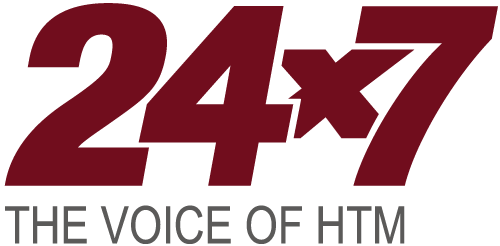The company’s second annual State of HTM Insights Report finds that healthcare providers are under mounting financial pressure and increasingly adopting proactive, data-based strategies to improve uptime, control costs, and address workforce shortages.
PartsSource has released its second annual State of Healthcare Technology Management (HTM) Insights Report, identifying key industry trends and providing data-driven insights that demonstrate how progressive HTM leaders are addressing challenges to increase equipment uptime, expand clinical capacity, and reduce operational expenses.
The State of HTM Insights Report leverages data and insights from more than 5,000 hospitals. Findings underscore an industry imperative to shift from reactive problem-solving to proactive performance management.
Healthcare Faces Mounting Financial and Operational Pressures
Rising costs, labor shortages, and supply chain disruptions are straining provider resources. A PartsSource survey of HTM leaders revealed concerns around clinical assets. Insufficient clinical asset management can lead to unplanned equipment downtime, which disrupts patient care, increases costs, and puts a strain on healthcare operations.
Clinical asset availability directly impacts a healthcare provider’s financial health and affects its ability to deliver reliable healthcare.
“As never before, healthcare providers are being asked to do more with less. Rarely has the reimbursement landscape looked so chaotic, with deep cuts to federal health programs projected in the next few years and private insurers constantly re-evaluating their business models and contracts,” says Philip Settimi, MSE MD, president and CEO of PartsSource, in a release. “The path forward requires proactive, data-driven, and technology-enabled approaches to equipment management that optimize clinical availability while protecting the financial health of healthcare organizations.”
Financial Pressures Drive Demand for Data-Driven Efficiency
“Declining margins have continued to hit the healthcare environment,” says Jeff Evans, chief commercial officer at PartsSource, in a release. “A lot of that is due to rising expenses, not only on the labor side, but on the non-labor side as well. Providers are looking for solutions that help them optimize their operations while maintaining the highest standards of patient care.”
Research from Kaufman Hall’s January 2025 report shows median year-to-date operating margins fell from 1.8% to 1.7%, while total expenses rose 4.7%, highlighting the need for data-driven strategies and reliable solutions to control costs and sustain access to mission-critical technology.
This year’s report found that 84% of HTM leaders identified their most urgent goal as controlling and reducing costs. To meet this goal, healthcare leaders are prioritizing proactive strategies to increase department productivity and efficiency. Labor shortages remain the biggest challenge in achieving this goal, with 32% of respondents citing it as their top obstacle, the same leading challenge identified in the first annual State of HTM Insights Report last year.
Key Data Insights: Seven Opportunities for HTM Optimization
The second annual State of HTM Insights Report identifies seven key opportunities for healthcare providers to increase efficiency, reduce costs, and improve reliability across their operation:
- Improve asset availability
- Optimize cost and quality for parts procurement
- Translate availability trends to impact
- Reduce expedited shipping to cut costs
- Optimize cost and quality for service
- Eliminate complexity nad costs in equipment service
- Use training strategies to upskill your tream
The report reveals that healthcare leaders face increasing pressure to improve asset availability, control costs, and strengthen workforce capabilities amid rising operational complexity.
The report highlights limited adoption of predictive maintenance and ongoing service delays. It shows how progressive healthcare providers use data-driven strategies, automation, vendor optimization, and scalable training to extend equipment life, reduce costs, and maintain continuous access to mission-critical technology.
Providers Lead the Conversation on Data-Driven HTM Strategies
HTM professionals featured in the report emphasize the urgent need to pursue innovative, data-driven decision-making.
“We are changing how we are thinking about the process and breaking the traditional mindset, so we can be practical for our future,” says Edgar Newell, assistant vice president for clinical engineering at RWJ Barnabas Health, in a release.
George Reed, director of clinical engineering at WakeMed Health and Hospitals, adds in a release, “No matter how large or small you are, you should be looking at your data so that you can be proactive instead of constantly reactive. Not only will it make your program more effective and efficient, but you can use the data to show your leadership the value that your program is delivering.”
As hospitals navigate economic and operational challenges, access to reliable, actionable data is critical, the report states.
ID 96225387 © Alexandersikov | Dreamstime.com





